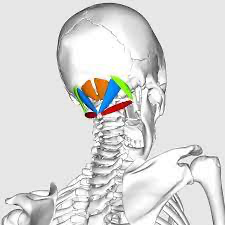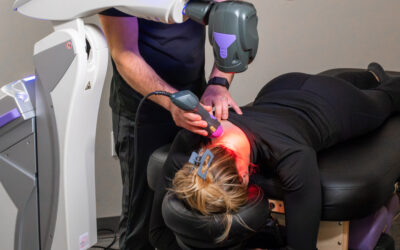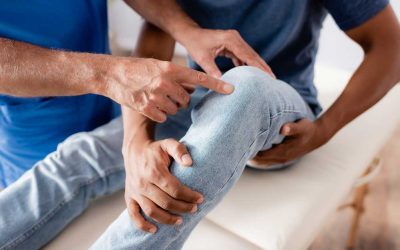 Whiplash is a catchy name that could otherwise be described as a neck sprain sustained from rapid head movement where the neck flexes and extends.
Whiplash is a catchy name that could otherwise be described as a neck sprain sustained from rapid head movement where the neck flexes and extends.
This is most commonly reported in car accidents where someone is hit from behind, forcing their head backward, and then as a recoil, their head is thrown forward.
Furthermore, in addition to straining the muscles of the neck, whiplash could also cause injury to the discs, intervertebral joints, and nerve roots.
Here are some of the common causes of whiplash:
• Car accidents (commonly rear-ended)
• Contact sports
• Slip and Falls
Signs and Symptoms of Whiplash
It may take a few days for whiplash symptoms to develop and may include:
• Neck pain and loss of cervical range of motion
• Soreness along the front of your back
• Tingling down the arm
• Muscle tenderness along the upper back, shoulders, and neck
A common question we get at Tangelo is, “why am I experiencing headaches from a neck strain”.
These headaches are generally tension headaches that stem from muscles located along the base of the skull called the suboccipital (see image below). These muscles are in charge of extending and rotating the head. When strained due to rapid flexion and extension of the neck, the suboccipitals can become tight and lead to facial tension that can wrap around from the back of the head to just above the eyebrows.

photo credit: Wikipedia
Therefore, identifying the root cause of your headaches and taking the proper action to alleviate your symptoms is paramount to ensure an expedient and full recovery. When it comes to headaches, sometimes the answer isn’t taking copious amounts of over-the-counter or prescription medication. Something as simple as releasing the tension of your suboccipitals (and supporting muscles) through stretches, mobility drills and proper exercises can be all you need to alleviate your headaches.
Here are a few examples of the drills and exercises listed above. Remember, every person is unique and needs a custom approach to getting out of pain.
These are just examples and should not be interpreted as exercise prescriptions for whiplash.
Upper Trap with Lacrosse Ball
Deep Cervical Brace
Furthermore, there are additional symptoms associated with whiplash that impact the quality of life.
These include:
• Sleep disruption
• Fatigue and irritability
• Ringing in the ears
• Dizziness
• Depression
When it comes to car accidents, what most people don’t realize is that it doesn’t take a lot of force for the person to suffer a whiplash injury of the neck. It’s reported that a whiplash injury can be sustained through impact as low as 10-12 miles per hour.
 How Does Chiropractic Help?
How Does Chiropractic Help?
Contrary to popular belief, resting right after a whiplash injury might not be the best move.
We’ve all heard the acronym R.I.C.E (rest, ice, compress, elevate). Well, the science actually suggests against it, and the acronym that you should remember going forward is A.R.I.T.A (active recovery is the answer).
Now, when we say active, we mean it from a relative standpoint. Active can mean anything from passive (assisted) range of motion work to active joint movement, stretching, and strengthening.
Regardless, it’s important that you move within your current capacity as soon as possible.
Movement is medicine.
This is why chiropractic can be instrumental in speeding up your recovery. When muscles and other soft tissues become injured, your brain is going to tell you to stop doing anything.
“Don’t move a muscle” – Your brain
Your brain is telling you this because it wants to protect you and prevent any future harm. While in the very short-term (24-48 hours), this can be a good thing, staying sedentary for too long can have a detrimental effect.
This is because when muscles become stiff due to inactivity, they also become weak. When they become weak, the stiffness/ tightness is only amplified because your brain now knows that taking your joints through full ranges of motion will challenge your muscles’ altered capacity and could potentially lead to further injury.
Do you understand the vicious cycle you are now stuck in?
Chiropractic, coupled with soft tissue therapy and functional rehab will quickly help restore joint range of motion, tissue flexibility, and muscle strength and capacity. Most of all, it will restore your confidence within your own body, which is invaluable.
What To Do If You Think You Have Whiplash
If you think you’ve suffered whiplash through a car accident, slip, and fall, contact sports, or some other means, the best thing to do is not to wait one more minute and call your team at Tangelo. The longer you wait, the more the tightness and discomfort will set in, and the more time it will take to recover and get you back to an active, pain-free life.
Give Tangelo a call or schedule an appointment online today! We have Seattle locations and a Portland, Oregon chiropractic location to serve you. Your only regret is that you didn’t call sooner.


